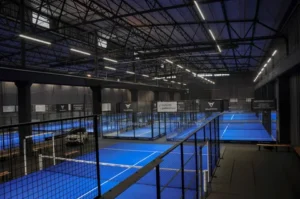How To Organize a Sideboard + Why You Need One
A sideboard may look like a stylish cabinet or a simple storage piece at first glance, but it’s actually a powerhouse of functionality and design. Whether placed in the dining room, living area, hallway, or kitchen, a well-organized sideboard can bring order, elegance, and efficiency to your space.
In this guide, we’ll walk you through how to organize a sideboard effectively, and more importantly, why you absolutely need one in your home.
Why You Need a Sideboard
Let’s start with the big question: Why bother with a sideboard at all?
1. Multifunctional Storage
A sideboard isn’t just a cabinet—it’s a storage solution that adapts to your needs. Use it to hold cutlery, serveware, linens, books, electronics, barware, or even board games. With both drawers and closed-door compartments, it offers smart organization without visual clutter.
2. Stylish Statement Piece
From mid-century modern to traditional wooden finishes, sideboards come in a variety of designs that complement your interiors. They don’t just blend into the background; they enhance your room’s overall aesthetic.
3. Extra Surface Area
Need space to display décor, prepare food, or set up a coffee bar? The flat top of a sideboard is the perfect platform for functional and decorative use.
4. Perfect for Every Room
While often associated with dining rooms, sideboards are incredibly versatile and fit just as well in the living room, hallway, bedroom, or office.
How to Organize a Sideboard: Step-by-Step
Once you have your ideal sideboard, it’s time to make the most of it. A messy sideboard defeats its purpose. Here’s how to organize it in a way that keeps your space tidy and intentional.
Step 1: Categorize What You Need to Store
Before placing anything inside, decide what your sideboard will be used for. This depends on the room it’s in:
- Dining Room: Plates, serving bowls, cutlery, napkins, tablecloths
- Living Room: Board games, books, media accessories, candles
- Kitchen: Coffee supplies, glassware, small appliances
- Hallway/Entryway: Keys, umbrellas, documents, chargers
Stick to one or two categories to avoid turning your sideboard into a junk drawer.
Step 2: Declutter Ruthlessly
Empty the sideboard and remove items that are broken, unused, or don’t belong. Only keep what you truly use or want to display. This ensures that your sideboard functions efficiently and doesn’t become overwhelmed.
Step 3: Use Drawer Dividers and Storage Bins
Make the most of your sideboard’s compartments by using drawer organizers, small boxes, or baskets. This keeps small items like coasters, candles, or cutlery from becoming tangled and cluttered.
For example:
- Use trays in the drawers to separate napkin rings, bottle openers, and chopsticks.
- Store table runners or placemats vertically in deep drawers.
- Use labeled bins for kids’ art supplies, if your sideboard is in the living room.
Step 4: Prioritize Accessibility
Keep the most-used items at waist height for easy reach. Place rarely used or seasonal items (like holiday dishes or extra wine glasses) in lower or higher sections.
If your sideboard has open shelving, place attractive, frequently used items like glassware or books there.
Step 5: Style the Top
The top of the sideboard isn’t just extra counter space—it’s a design opportunity.
Here are a few styling ideas:
- Add a table lamp for soft ambient lighting
- Display a decorative tray with candles or small plants
- Prop up artwork or a mirror for a focal point
- Stack books or magazines with a decorative object on top
- Use matching vases or candle holders on either end for symmetry
Keep it neat—too much clutter defeats the purpose of the piece.
Sideboard Organization Tips for Each Room
Dining Room
- Store serveware by type: platters together, bowls together.
- Keep a drawer for napkins, placemats, and coasters.
- Use one cabinet section for wine bottles or decanters.
Living Room
- Dedicate one section to remote controls, another for family games.
- Use the top to display your favorite décor items.
- Store throws or cushions inside when not in use.
Bedroom
- Use it as a stylish cabinet to store extra sheets and pillows.
- Organize accessories or perfumes on top.
- Add a mirror above to turn it into a vanity-style space.
Final Thoughts: Style Meets Utility
A sideboard is the perfect example of form meets function. With the right organizational strategy, it becomes more than just a cabinet—it’s a storage solution that elevates your lifestyle and your décor.
So whether you’re looking to clear the clutter, create a stylish serving station, or simply add a beautiful accent piece to your home, a sideboard checks all the boxes. And once it’s organized? You’ll wonder how you ever lived without it.












